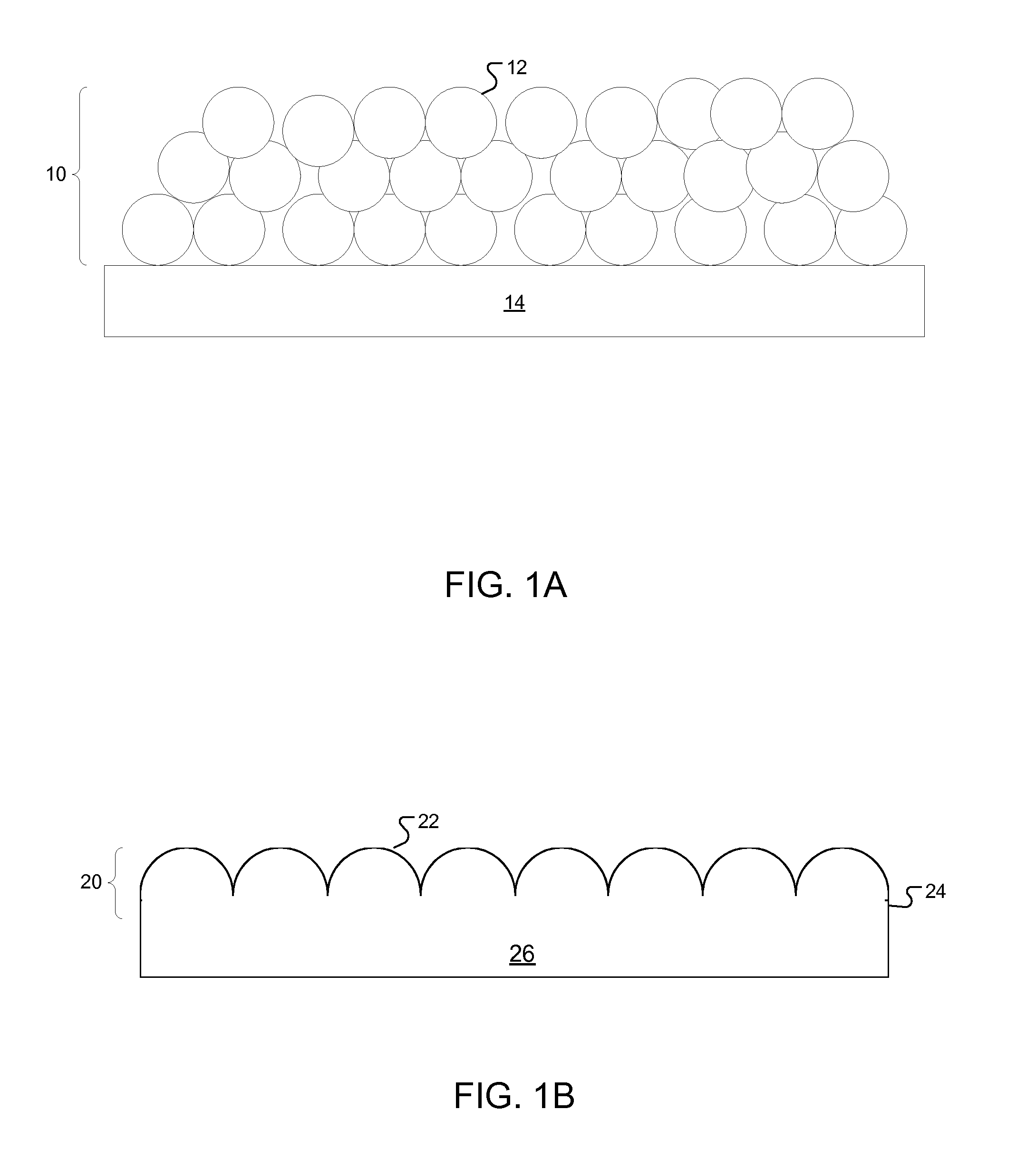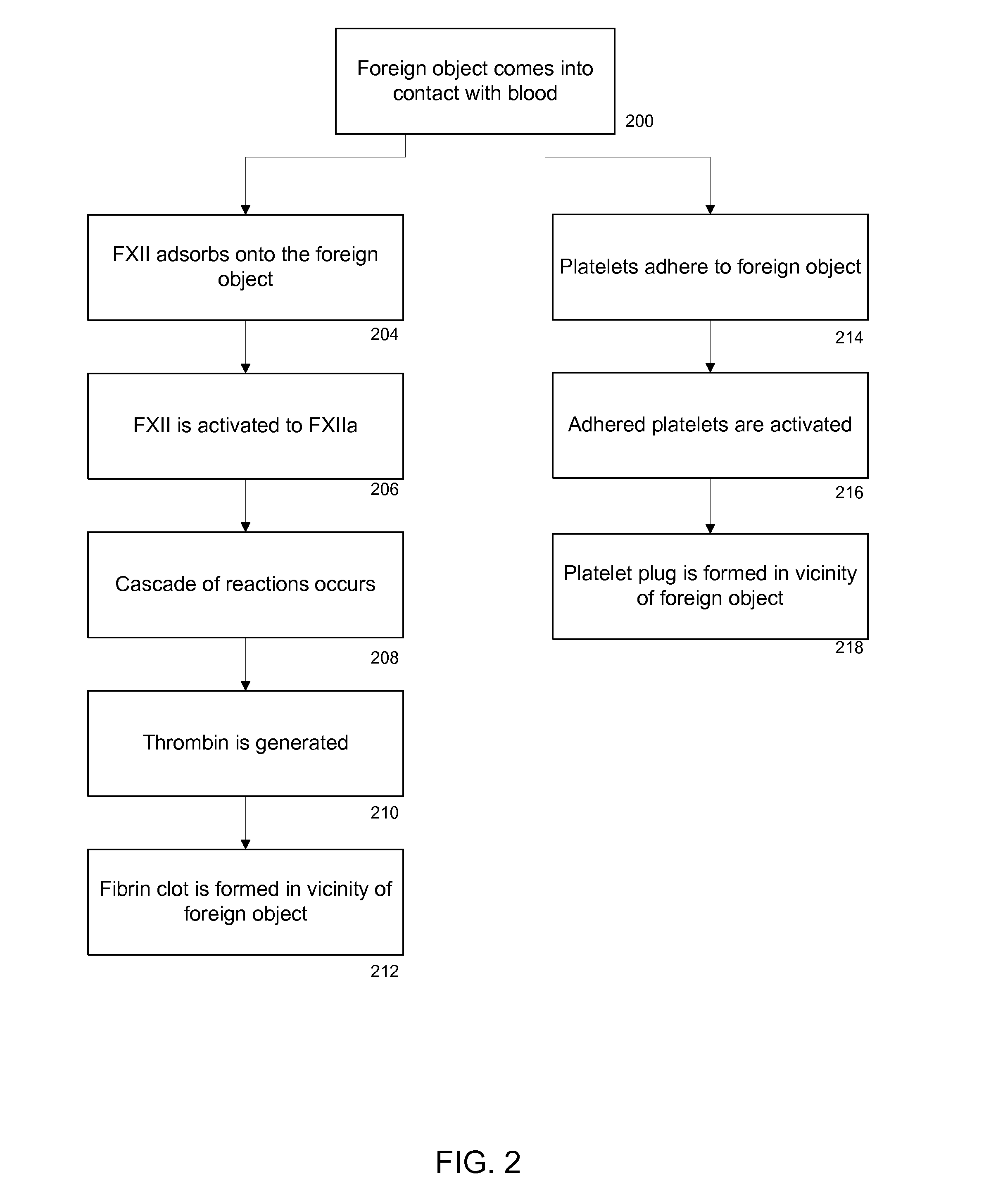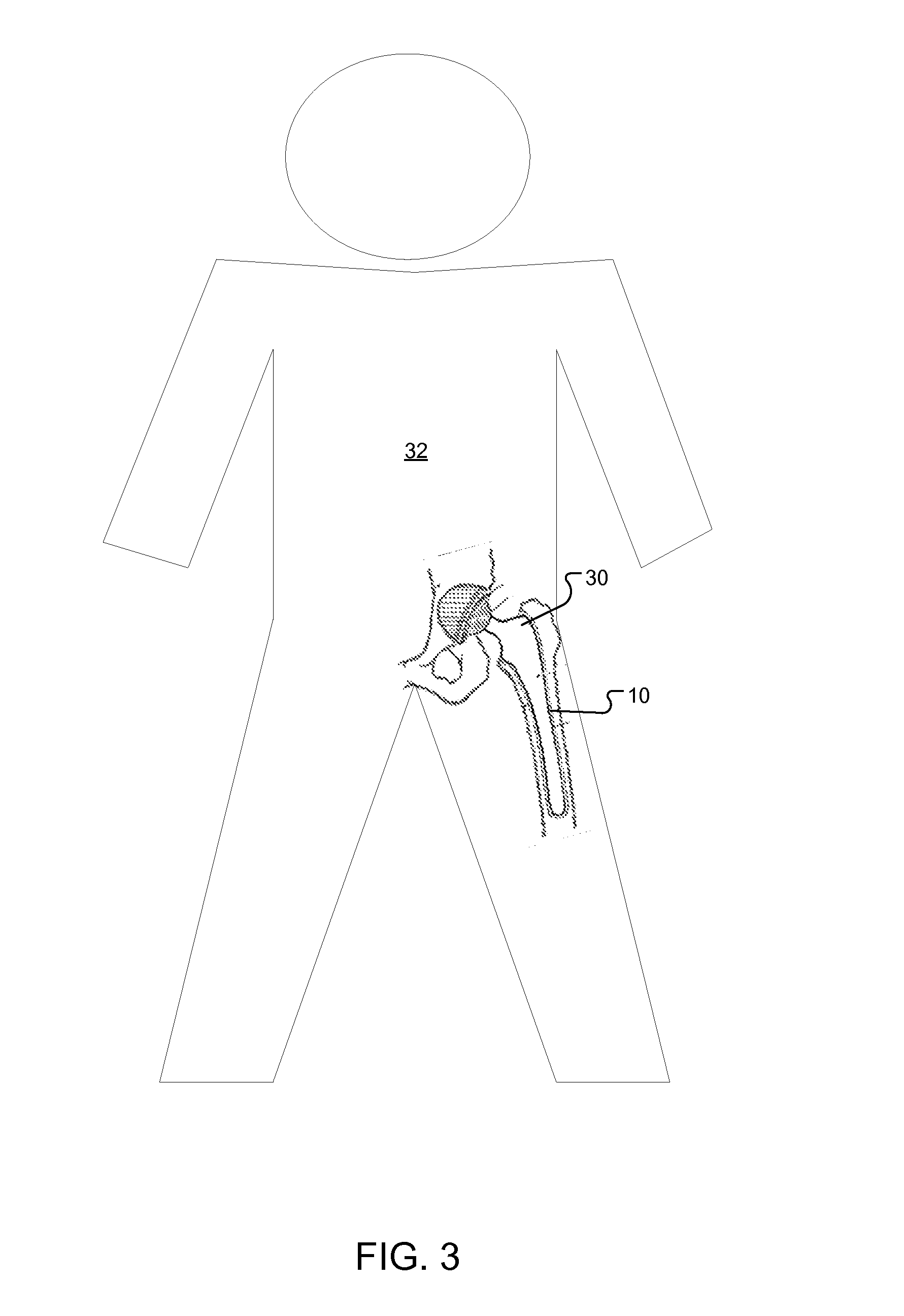Blood compatible surfaces
a technology of blood compatible surfaces and compatible surfaces, which is applied in the direction of cleaning using liquids, packaging foodstuffs, ways, etc., can solve the problems of limiting the intrinsic coagulation activity of blood in the vicinity of blood compatible surfaces, limiting the adsorption of platelets onto the surface, and affecting the coagulation activity of blood on the surface of medical devices, etc., to achieve the effect of limiting the intrinsic coagulation activity of blood, high curvature, and high curva
- Summary
- Abstract
- Description
- Claims
- Application Information
AI Technical Summary
Benefits of technology
Problems solved by technology
Method used
Image
Examples
example 1
Preparing Blood Compatible Coatings of Nanoparticles
[0059]Blood compatible coatings of silica nanoparticles of various sizes were fabricated on Si wafer substrates. 5 mL of silica nanoparticle dispersion in water (various sizes and manufacturers; see Table 1) was added to a vigorously stirred solution of 0.5 mL HCl (aq.) in 44.5 mL ethanol. The concentration of the 12 nm, 22 nm, 50 nm, and 85 nm nanoparticles in water was 40 wt. %; the concentration of the 7 nm nanoparticles in water was 30 wt. %; and the concentration of the 4 nm nanoparticles was 15 wt. %. Each nanoparticle dispersion in ethanol was placed in a 10K molecular weight cutoff dialysis membrane (Fisher Scientific) and dialyzed against ethanol several times.
TABLE 1Silica nanoparticles used to prepare blood compatible coatingsNominalSurface Commercialdiameter areanameProvider(nm)(cm2 / g)ASAlfa Aesar ® (Ward Hill, MA)4 6.5 × 106Ludox ® SMSigma-Aldrich ® (St. Louis, MO)73.45 × 106Ludox ® HSSigma-Aldrich ®12 2.2 × 106Ludox ®...
example 2
Coagulation Activity in Suspensions of Nanoparticles
[0068]The time dependent intrinsic blood coagulation activity was evaluated in suspensions of silica nanoparticles of different sizes. Flat SiO2 glass was used as a control sample. Because FXII adsorption on the surface of the procoagulant (i.e., nanoparticles or flat glass) is a trigger of the coagulation cascade, the intrinsic coagulation activity depends on the surface area of the procoagulant. Thus, the intrinsic blood coagulation activity was also evaluated as a function of the total surface area of the silica nanoparticles in the suspensions.
[0069]To prepare nanoparticle samples for evaluation of the intrinsic coagulation activity in solution, a sample solution was formed of 10 mL of 0.1 M tris HCl, 0.6 mL of 5 N NaCl (aq)., 0.4 mL of 0.5 M CaCl2 (aq), 0.5 mL of 2 mM phosphatidylserine (aq) (Sigma-Aldrich), 0.4 mL of 5 mM S-2238 (aq) (Chromogenix, Milan, Italy), and 0.5 mL of human plasma (Plasma Control N, Siemens Healthcare...
example 3
Coagulation Activity on High Curvature Blood Compatible Coatings
[0078]The intrinsic blood coagulation activity on substrates coated with high curvature blood compatible coatings formed of nanoparticles of various sizes was characterized. Flat SiO2 substrates and biologically inert MPC polymer substrates were used as control samples.
[0079]Blood compatible coatings of silica nanoparticles were prepared as described in Example 1 to coat both sides of a 5 mmφ cover glass with blood compatible nanoparticle coatings. Flat SiO2 substrates were prepared as described in Example 2.
[0080]A sample solution was formed of 10 mL of 0.1 M tris HCl, 0.6 mL of 5 N NaCl (aq)., 0.4 mL of 0.5 M CaCl2 (aq), 0.5 mL of 2 mM phosphatidylserine (aq), 0.4 mL of 5 mM S-2238 (aq), and 0.5 mL of human plasma. 5 mm×5 mm glass cover slips were coated with nanoparticles according to the approach described in Example 1 and placed into an MPC coated 96-well plate. A 180 μL aliquot of the sample was poured over each c...
PUM
| Property | Measurement | Unit |
|---|---|---|
| Fraction | aaaaa | aaaaa |
| Diameter | aaaaa | aaaaa |
| Fraction | aaaaa | aaaaa |
Abstract
Description
Claims
Application Information
 Login to View More
Login to View More - R&D
- Intellectual Property
- Life Sciences
- Materials
- Tech Scout
- Unparalleled Data Quality
- Higher Quality Content
- 60% Fewer Hallucinations
Browse by: Latest US Patents, China's latest patents, Technical Efficacy Thesaurus, Application Domain, Technology Topic, Popular Technical Reports.
© 2025 PatSnap. All rights reserved.Legal|Privacy policy|Modern Slavery Act Transparency Statement|Sitemap|About US| Contact US: help@patsnap.com



